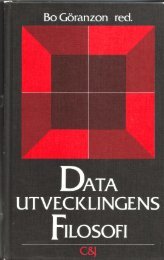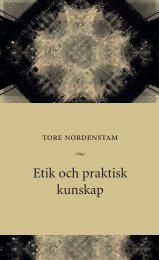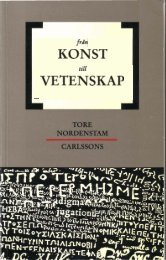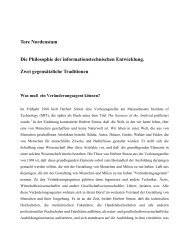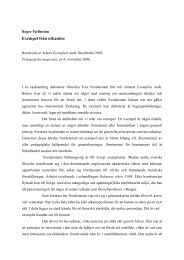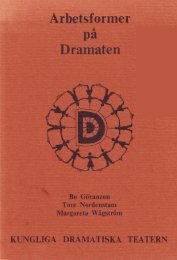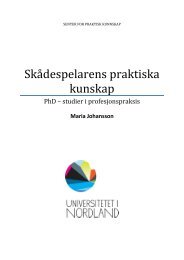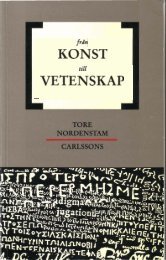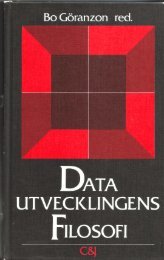tore nordenstam explanation and understanding in the history of art
tore nordenstam explanation and understanding in the history of art
tore nordenstam explanation and understanding in the history of art
You also want an ePaper? Increase the reach of your titles
YUMPU automatically turns print PDFs into web optimized ePapers that Google loves.
It should also be clear by now that <strong>the</strong> <strong>in</strong>tentionalist pattern cannot accommodate all <strong>the</strong><br />
th<strong>in</strong>gs that are referred to as “<strong>explanation</strong>s” <strong>in</strong> <strong>art</strong>-historical contexts. Explanations <strong>in</strong> <strong>the</strong><br />
sense <strong>of</strong> “<strong>in</strong>terpretations”, like those <strong>in</strong> examples 1 - 3, fall outside <strong>the</strong> scope <strong>of</strong> this<br />
pattern, <strong>and</strong> so do <strong>the</strong> <strong>explanation</strong>s h<strong>in</strong>ted at <strong>in</strong> Example 7 (how-possible- <strong>and</strong> why-<br />
notpossible-<strong>explanation</strong>s). The k<strong>in</strong>d <strong>of</strong> <strong>explanation</strong> illustrated by Example 8, on <strong>the</strong> o<strong>the</strong>r<br />
h<strong>and</strong>, can be shown to rest on <strong>the</strong> <strong>in</strong>tentionalist pattern, as I shall show <strong>in</strong> section 2.4<br />
below.<br />
Although <strong>the</strong> <strong>in</strong>tentionalist pattern seems to fit at least one type <strong>of</strong> <strong>explanation</strong> to be<br />
found <strong>in</strong> <strong>the</strong> human sciences fairly well, <strong>and</strong> certa<strong>in</strong>ly much better than <strong>the</strong> deductivenomological<br />
pattern seems to do, a number <strong>of</strong> critics have drawn attention to various<br />
<strong>the</strong>oretical difficulties which <strong>the</strong> <strong>in</strong>tentionalist pattern gives rise to. We have already<br />
considered Hempel’s attempt to reduce Dray’s version <strong>of</strong> <strong>the</strong> <strong>in</strong>tentionalist pattern (<strong>in</strong> one<br />
<strong>of</strong> its <strong>in</strong>terpretations) to <strong>the</strong> deductive-nomological pattern. Raimo Tuomela has made a<br />
similar attempt to show that von Wright’s version <strong>of</strong> <strong>the</strong> <strong>in</strong>tentionalist pattern should be<br />
reduced to <strong>the</strong> deductive-nomological pattern.<br />
Tuomela st<strong>art</strong>s from <strong>the</strong> more elaborate version <strong>of</strong> von Wright’s model quoted above:<br />
(P1) From now on A <strong>in</strong>tends to br<strong>in</strong>g about X at time t.<br />
(P2) From now on A considers that unless he does Y no later than at time t', he<br />
cannot br<strong>in</strong>g about X at time t.<br />
(C) Therefore, no later than when he th<strong>in</strong>ks time t' has arrived, A sets himself to<br />
do Y, unless he forgets about time or is prevented.<br />
This pattern ought to be replaced with <strong>the</strong> follow<strong>in</strong>g one, accord<strong>in</strong>g to Tuomela:<br />
(P1) From now on A <strong>in</strong>tends to br<strong>in</strong>g about X at time t.<br />
(P2) From now on A considers that unless he does Y no later than at time t', he<br />
cannot br<strong>in</strong>g about X at time t.






